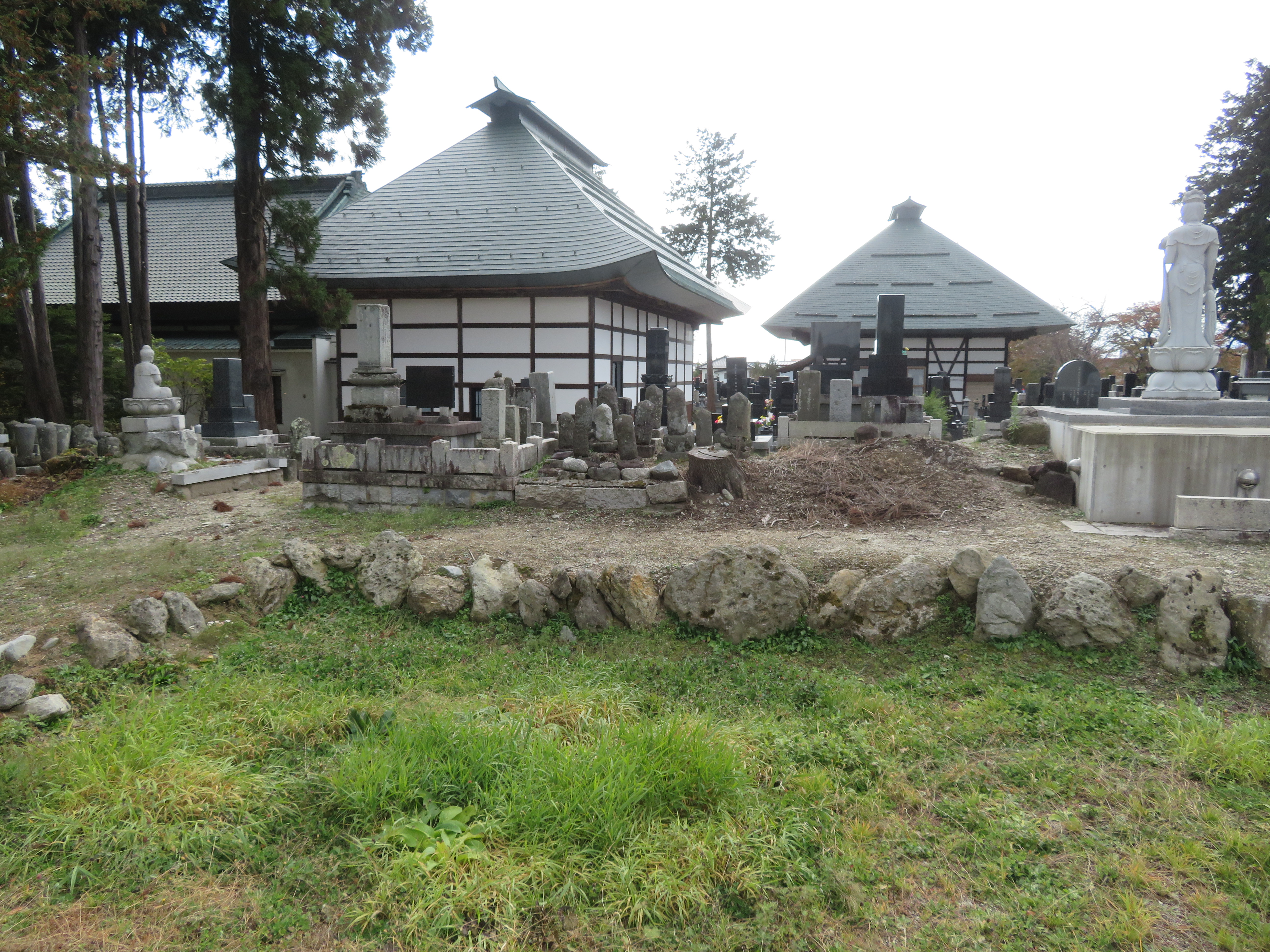History
Tenshōji, the former site of Nishinajō, is the largest temple in downtown Ōmachi. One might wonder where Ōmachi got its name, since it means "big town", although this alpine tourist destination has, if anything, a reputation as a small mountain town. There are no tall buildings and the atmosphere is quite rustic. However, from as far back as the Kamakura and Muromachi periods, Ōmachi was a significant settlement centered around the fortified residences, called Yakata in Japanese, of the Nishina Clan. The Nishina directed the development of the town, constructing canals to provide a water supply to the townhouses built in a long row throughout the plain. The shrine Nyakuichiōji-jinja was built in the north of the town in the Azuchi Period to pray for its prosperity. After the Nishina's residences were confiscated and converted into temples by Oda Nobunaga, the town nonetheless continued as a trading post, particularly for salt traders coming from Echigo into Shinano, throughout the Edo Period and well into the Meiji Period.
Tenshōji-yakata was the main yakata of the Nishina and so also called Nishinajō. Edo Period maps of Ōmachi show the temple then still completely surrounded by the former castle's square moat. The remains of this moat and some embankments can be seen today. In 1582, Nishinajō was converted into the temple Tenshōji after the Nishina lost to Oda Nobunaga at the battle of Takatōjō.
Visit Notes
A large stone marker at the temple identifies Tenshōji as the former site of Nishina Castle, although the site is also called Tenshōji-yakata. A yakata was a fortified manor house and the Nishina built many in the area. In fact, there are five that I visited in downtown Ōmachi alone, and more can be found throughout the surrounding countryside. The Tenshōji-yakata seems to have been the largest. Even after the Nishina were evicted and the yakata converted into temples, the surrounding moats were retained, some dry, some water-filled. Tenshōji-yakata had water moats and the remains of this moat and some embankments can be seen today, particularly on the temple's north side. A small water channel runs through the site which was used to bring water to the temple and likely the yakata before it. The temple is also known for possessing a miniaturised pagoda, sculpted in 1688, which was formerly carried about on festival days.
I found possible dorui (earthwork) remnants north of the temple, near Kama-jinja and a park. According to one source the yakata may have had both an inner and outer moat, although the outer one was gone by the Edo Peirod. Kama-jinja remained part of the grounds of Tenshōji, however, until the Meiji Period. This indicates that the yakata's footprint may have extended to the north.
| Castle Profile | |
|---|---|
| English Name | Nishina Castle |
| Japanese Name | 仁科城 |
| Alternate Names | 天正寺館 |
| Founder | Nishina Clan |
| Year Founded | Kamakura Period |
| Castle Type | Fortified Manor |
| Castle Condition | Ruins only |
| Designations | Local Historic Site |
| Historical Period | Pre Edo Period |
| Features | trenches |
| Visitor Information | |
| Access | Shinano-Omachi Station on the Oito Line; 20 minute walk |
| Visitor Information | 24/7 free; temple |
| Time Required | 60 mins |
| Location | Omachi, Nagano Prefecture |
| Coordinates | 36° 30' 23.69" N, 137° 51' 8.03" E |
|
|
|
| Admin | |
| Added to Jcastle | 2020 |
| Contributor | ART |
| Admin Year Visited | Viewer Contributed |
















Enable comment auto-refresher